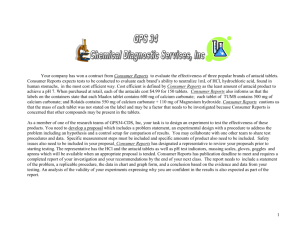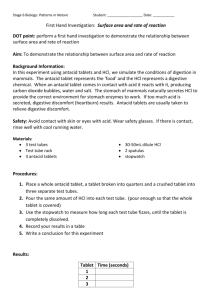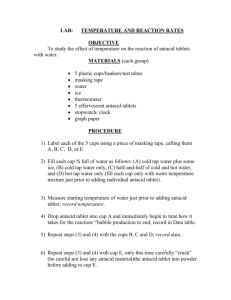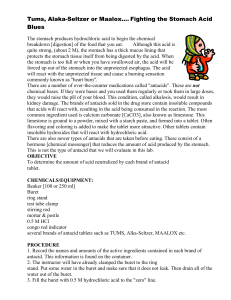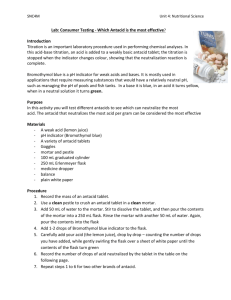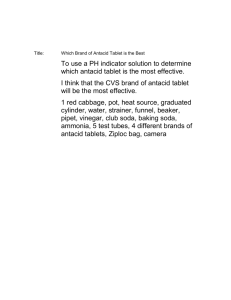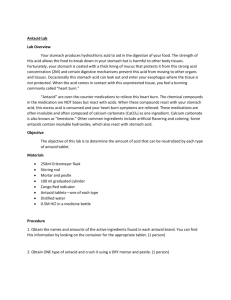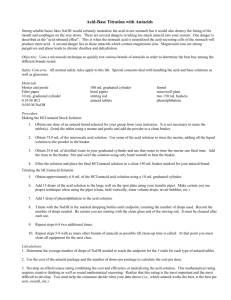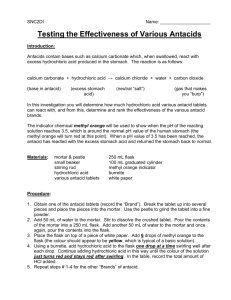Collision Theory Lab: Antacid Reaction Rates
advertisement
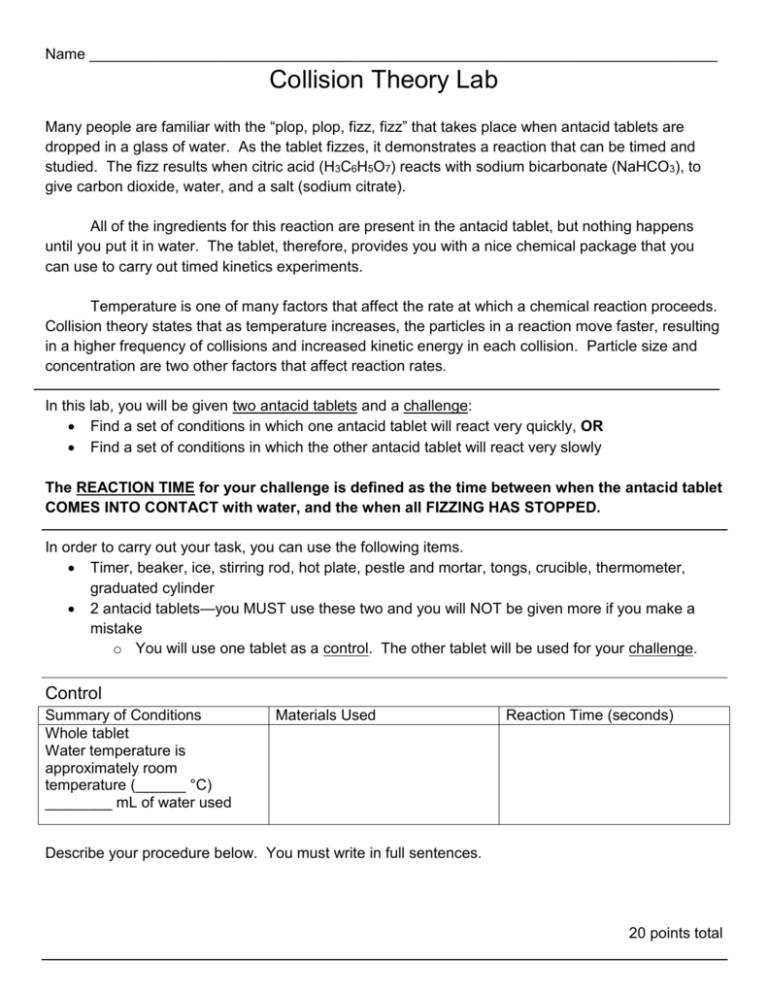
Name ___________________________________________________________________________ Collision Theory Lab Many people are familiar with the “plop, plop, fizz, fizz” that takes place when antacid tablets are dropped in a glass of water. As the tablet fizzes, it demonstrates a reaction that can be timed and studied. The fizz results when citric acid (H3C6H5O7) reacts with sodium bicarbonate (NaHCO3), to give carbon dioxide, water, and a salt (sodium citrate). All of the ingredients for this reaction are present in the antacid tablet, but nothing happens until you put it in water. The tablet, therefore, provides you with a nice chemical package that you can use to carry out timed kinetics experiments. Temperature is one of many factors that affect the rate at which a chemical reaction proceeds. Collision theory states that as temperature increases, the particles in a reaction move faster, resulting in a higher frequency of collisions and increased kinetic energy in each collision. Particle size and concentration are two other factors that affect reaction rates. In this lab, you will be given two antacid tablets and a challenge: Find a set of conditions in which one antacid tablet will react very quickly, OR Find a set of conditions in which the other antacid tablet will react very slowly The REACTION TIME for your challenge is defined as the time between when the antacid tablet COMES INTO CONTACT with water, and the when all FIZZING HAS STOPPED. In order to carry out your task, you can use the following items. Timer, beaker, ice, stirring rod, hot plate, pestle and mortar, tongs, crucible, thermometer, graduated cylinder 2 antacid tablets—you MUST use these two and you will NOT be given more if you make a mistake o You will use one tablet as a control. The other tablet will be used for your challenge. Control Summary of Conditions Whole tablet Water temperature is approximately room temperature (______ °C) ________ mL of water used Materials Used Reaction Time (seconds) Describe your procedure below. You must write in full sentences. 20 points total Challenge Tablet –Fast or Slow Reaction (circle one) Summary of Conditions Materials Used Reaction Time (seconds) Describe your procedure below. You must write in full sentences. 30 points total Post-Lab Questions 50 points total 1) Increasing temperature increases the ____________________ energy of the reactants, which causes particles to _______________ more frequently. 2) Increasing the ________________ of a reactant in solution increases the chances of a collision between particles. 3) For gaseous reactants, increasing the __________________ is the same as increasing the concentration. 4) A reactant will react faster if its particle size is ____________ and its total surface area is __________________. 5) What must particles do with each other before they react? ___________________ 6) Iron reacts with hydrochloric acid to form iron(II) chloride and hydrogen gas. Two grams of iron are added to 100 cm3 of dilute hydrochloric acid. Which conditions produce the slowest reaction? a. iron pieces at 50°C c. iron powder at 25°C b. iron powder at 50°C d. iron pieces at 25°C 7) For reactions to occur, the particles of the reactants must collide. The fewer the collisions that take place, the slower the rate of reaction. Which INCREASES the frequency of collision between reactant particles? a. For reactions involving gaseous reactants, decrease the pressure of the gases b. For reactions involving solutions, decrease the concentration of the solution c. If a solid is reacting with a liquid, use large pieces of the solid d. Increase the temperature of the reaction mixture Equipment per station 2 tablets 1 timer 1 beaker (500 mL) 1 stirring rod 1 hot plate 1 pestle and mortar Tongs Crucible Thermometer Graduated cylinder Hydrogen peroxide Need: ~2800 mL Price: $.88/946 mL Cost: <$3.00 Antacid Tablets Need:~360 tablets Price: $4.57/48 tablets Cost: ~$40.00 Potatoes Need: ~7 Estimated cost: <$10.00 Total estimated cost: ~$50.00
